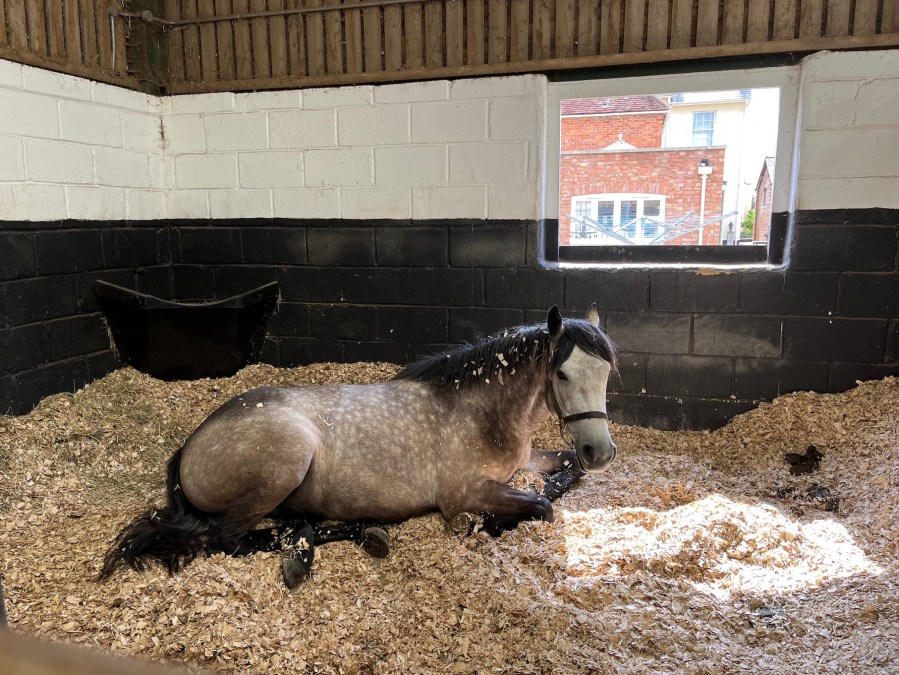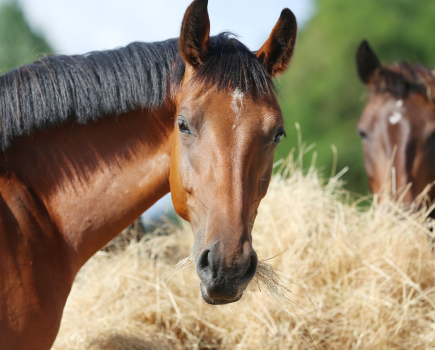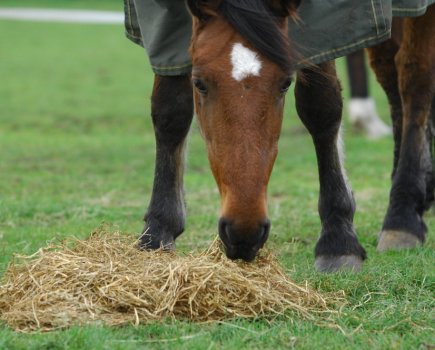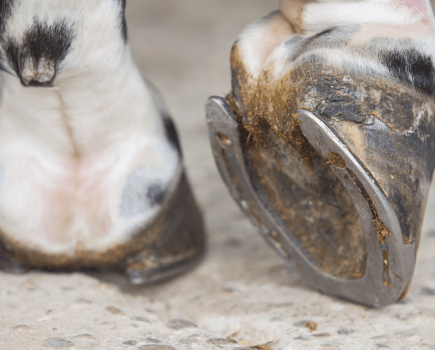Most people have a favourite choice of horse bedding, and there are several factors at play when it comes to choosing the most appropriate type for your equine.
Whether you like bedding your horse down on straw or shavings, or you choose an alternative material such as paper or wood pellets, there are multiple types of horse bedding to choose from.
What suits one horse won’t be right for another, and you will need to consider this as part of your horse care and management routine. Some horses are wetter and therefore need a more absorbent material, for example, while others may have a health condition, such as a respiratory disease, and so only dust-free will do.
“It’s important to consider your horse’s needs above all else when choosing bedding. For example, if a horse has respiratory or allergy problems, choose a totally dust-free bedding with high absorbency levels, such as paper, or dust-extracted shavings,” says Sue Hurford, a BHS level 4 senior yard manager and senior lecturer in equine science at Bridgend College.
Choosing horse bedding
Things to consider include:
- Personal preference — if you’ve been using the same horse bedding for years and are used to it, you might be reluctant to try something new, and that’s totally understandable.
- Your horse’s needs — as I’ve already mentioned, horses have individual needs, which could mean one type of bedding will suit them better than another.
- Conditions set by your yard — I bedded my horses on straw for years when they were living on my parents’ farm, but when I relocated for work and they moved to a livery yard, straw wasn’t allowed and I started using shavings instead. Check with the yard manager before you purchase bedding (and, if you’re moving yards, make a note of any conditions before you decide to move in).
- Price — different types of horse bedding come with varying price tags. Often, if you can buy in bulk, the price per bale is lower too.
- Storage capacity — in order to buy in bulk, however, you’ll need somewhere dry, mud-free and undercover to store it, so consider what space you have available first.
- Being able to buy locally — a quick trip to buy it (or even better, a home delivery service, but ask about delivery fees first), are preferable rather than a long journey to purchase your chosen bedding. Remember that the further you have to drive, the more expensive it makes the bedding too, as you’ll be using fuel.
- Muck heap space — more straw bedding tends to be removed each day compared to shavings, for example, which leads to a bigger muck heap that needs removing more often. So factor in where the muck heap will be located and how it will be removed.
Types of horse bedding
Wheat straw
Wheat straw is a very affordable bedding and it can be used for both normal and deep litter beds. It is readily available, absorbent, warm and easy to muck out, plus it isn’t difficult to dispose of. However, it can contain dust and spores and so isn’t ideal for horses with respiratory issues or allergies.
Oat straw
Horses like to eat oat straw and it isn’t as absorbent as wheat straw. It can be relatively cheap following a good harvest, but like wheat straw it can also be dusty.
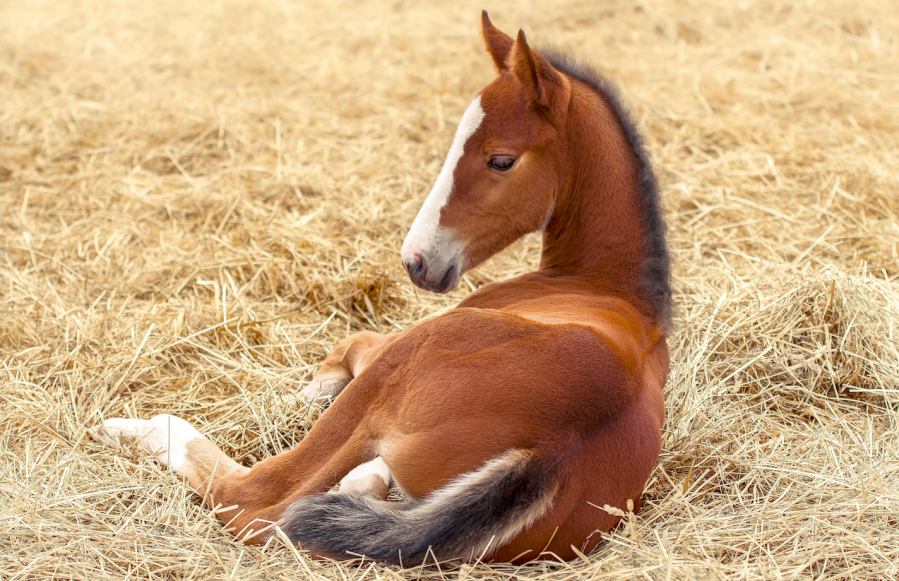
Wood shavings
One of the more expensive bedding options, the biggest benefit of shavings is their absorbency and ease of use. Most brands are now dust-extracted, but it is worth double checking if your horse has a breathing or allergy issue. They take a long time to rot down, but can be burnt.
Paper
One of the cheaper options of bedding, paper has the same insulation and storage qualities as straw or wood shavings, but it requires more cleaning and maintenance.
It isn’t good for deep litter beds due to its low absorbency rates and it can be tricky when grooming due to the ink from the print.
Cardboard horse bedding is also available but both this and paper can be messy to use as they blow around easily. Paper can be slippery underfoot too.
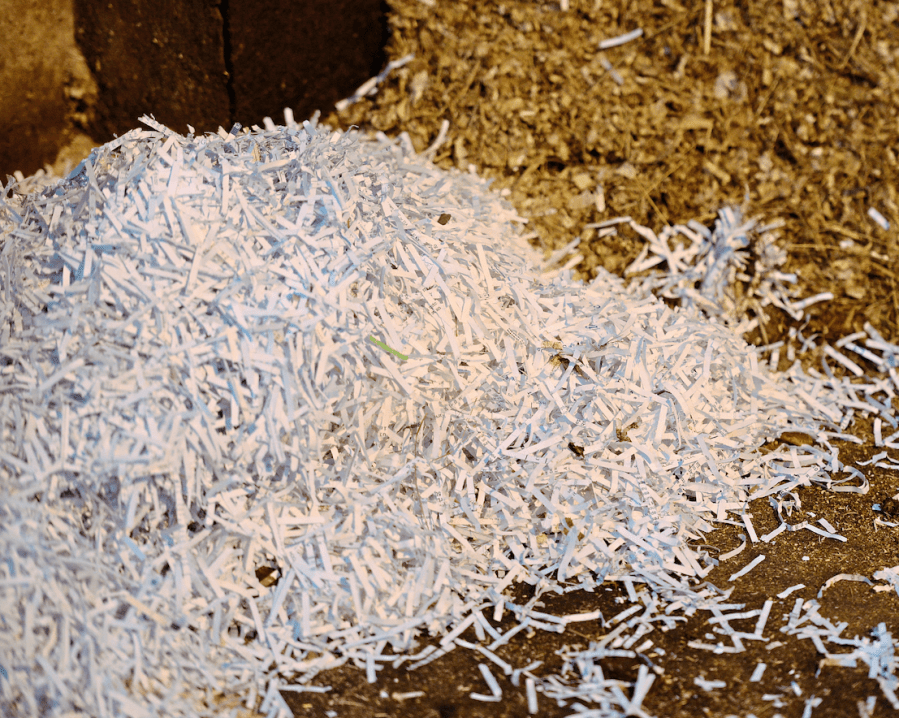
Wood pellets
Wood pellets can absorb nine times more liquid than regular shavings and so are super absorbent, making them ideal for deep-litter beds.
However, they can be time consuming to lay as they need wetting prior to use and they can be slippery when still dry. They can work out to be more cost-effective than other bedding types.
Wood pellets is a great bedding type for horses that are prone to eating their beds. Wood pellets can also provide more consistent footing.

Hemp
Hemp has a good level of absorbency and it can be used in deep litter beds, making it economical and it can used in deep litter beds, making it economical in the long run.
It is dust-free and breaks down very quickly, meaning that it is ideal for wet horses with respiratory problems. Bear in mind that it can be quite expensive initially and it can also be slippery when first laid down. Hemp tends to stick to rugs, manes and tails.
Miscanthus bedding
Micanthus is a great alternative to a straw bedding as it’s more absorbent compared to straw and overall you will have less waste, which means a smaller muck heap and less topping up, saving you time and money overall.
However, one thing to consider before choosing miscanthus is that some horses will eat it.
Miscanthus bedding has a spongy inner core that is highly absorbent, biodegradable and more hygienic that some other bedding types. It is eco-friendly too.
Wood fibre
Wood fibre horse bedding can be used as a half bed, quarter bed and a full bed, with or without banks. The bed is designed to be a deep litter bed that is supportive to your horse’s legs and joints. It is free draining, so the base of the bed will hold urine, meaning the bed will not move about as much as other types of horse bedding.
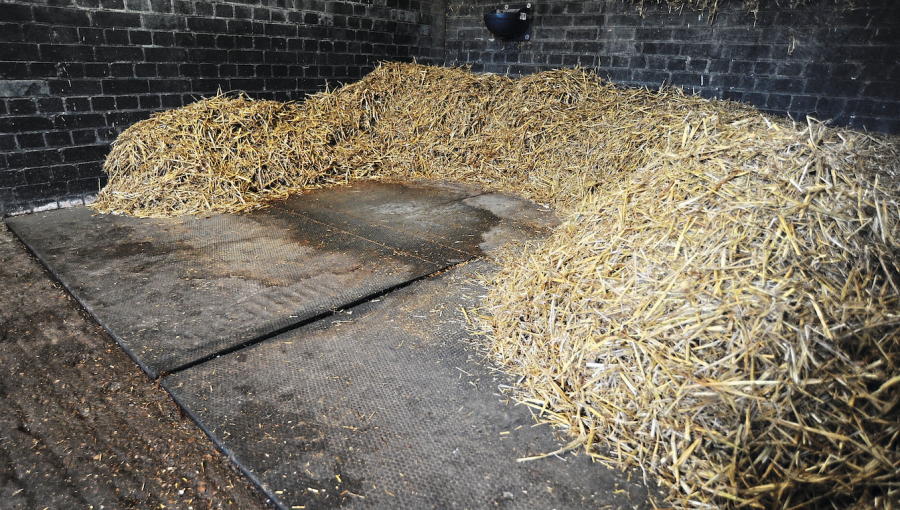
Rubber matting
The idea of rubber matting is that it provides a padded base for horses to lie on, meaning that owners can use slightly less bedding, thus reducing costs, although the initial outlay of purchasing the matting can be expensive.
Mats require require cleaning, including underneath, and they can be heavy to move.
Save money on horse bedding
Yard manager Sue Hurford suggests doing the following in order to save money on horse bedding:
- Some beds, such as wood pellets, take time to set up initially, but you will spend less time mucking out in the long term and less bedding is removed at a time, as it is so absorbent and easy to use, meaning you need to buy less in the long run.
- Order bedding in bulk if you have enough storage, as it can save money per bag or bale and saves on delivery costs.
- Use the appropriate tools for mucking out the bedding type you choose, so that you don’t remove more bedding than you need to. Many companies sell their own tools made specifically for use with their bedding.
- Some bedding may seem cheap, but check out its contents. If you’re having to buy twice the number of bags because there is less bedding inside, it is false economy.
- Dust isn’t the only problem to consider, ammonia is too. Ammonia can cause respiratory issues in the long run, possibly leading to vet call outs. Choosing absorbent bedding, plus thorough mucking out and allowing the floor to dry once it has been disinfected is a worthwhile investment.
- Mixing different bedding types can sometimes work well. For example, using a base layer of wood pellets under a layer of straw. You then have an absorbent base layer with a warm, fluffy bed on top. It could also work out cheaper, depending on which bedding types you choose.
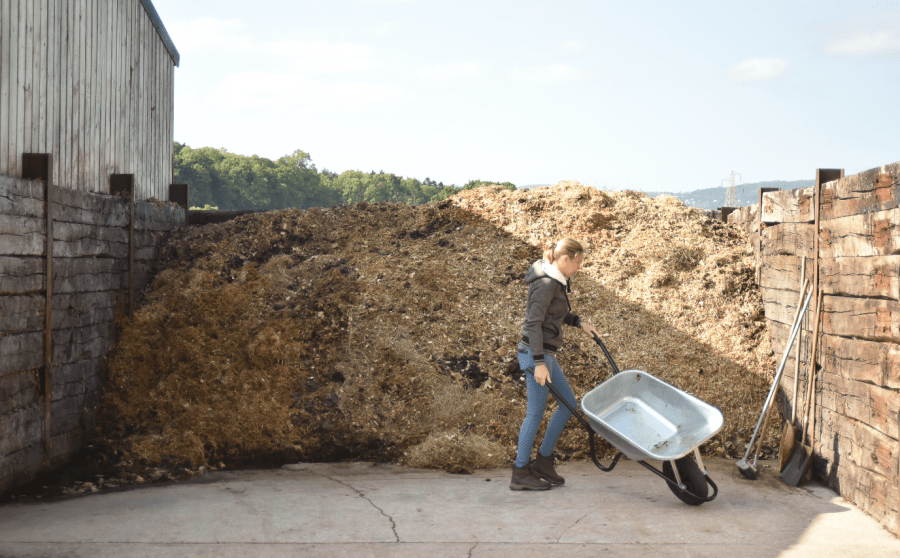
Adding banks
The levelness of horse bedding and whether you include banks comes down to personal preference and what best suits your horse. I personally do like to bank my horse’s bedding.
King rolls every time he comes in from the field or after being ridden, and the banks help to lower the impact when his legs hit the walls. I had to rescue my first pony, Prudence, several times after she rolled too close to the wall and became cast on several occasions — usually when my banks were insufficient.
So that’s why I always have big banks in my stables. I think they look nice and cosy, too.
“A deep, full and firmer bed that does not move around much can only help to achieve a bed that feels warm, comfortable and supportive for your horse. Whether you choose to include banks really comes down to what your horse needs,” says Clare Pearson from Easibed.
“Banks can help to prevent your horse getting too close to the stable wall when lying down, hopefully helping to prevent injuries from your horse getting up and also when rolling.”
Eating bedding
Hungry horses maybe prone to eating their bed, and while eating small amounts of straw is not a problem for some horses, it may be better to choose anything other than straw to bed these horses down on so that you can control how much straw they eat.
For horses who are messy and require a lot of fresh bedding, use a more affordable, high-absorbency bedding, such as wood pellets or hemp, to keep down costs as well as soak up urine effectively.
“You should also consider your yard’s muck heap options,” advises Sue Hurford. “If you use a muck trailer, go for a lightweight bedding that can be easily squashed down to save on the amount of times you have to empty it. If you have lots of space for a big muck heap, use bedding that will break down and compost well.”
Bedding for a wet horse
Horses who are very wet, as well as those who have a tendency to bury droppings in the bedding, can be time consuming to muck out. Easibed‘s Clare Pearson suggests wood fibre bedding as a good option for horses like this.
“Urine will drain through the wood fibres straight to the bottom of the bed, keeping the top layer of the bed dry,” explains Clare. “Wood fibre horse bedding also creates a bed that is firm under foot, so droppings tend to stay on the top layer of the bed, making it easier to skip out.”
Wood fibre bedding creates a big, deep and cosy bed that will save time and money, adds Clare. This is because it uses less bedding and results in a smaller muck heap to dispose of.
“On a daily basis, you only need to take out the droppings and tidy the bed. Where darker patches do appear through the top layer of the bed, simply remove the wet area at that point. There is no need to lift the entire bed when doing so.
“Another thing to think about when choosing horse bedding is that the bed needs to offer protection against urine splash back,” continues Clare, “as some horses can be susceptible to urine burns”.
Bedding for a horse with allergies
“Allergic reactions in horses can be caused by a number of factors, but equine vets cite dust and spores as the biggest culprits and it’s thought they are responsible for one of the most widespread health problem that horses in the UK suffer from — respiratory disease,” says Brent Adamson from Bedmax.
“More specifically, it is tiny particles of airborne or respirable (breathable) dust and spores that cause the biggest problem. Even small quantities concentrated in the horse’s breathing zone in a loose box can cause an allergic reaction, or even a non-allergic irritation that can cause an inflammatory response in the respiratory system.”
For a horse with a dust allergy or a respiratory disease, one of the most important factors to consider when choosing bedding is that it contains the lowest possible levels of dust and spores.
“For allergy-sensitive horses in particular, beddings that contain additives of any kind are best avoided, so opt for natural products,” adds Brent. “Look out for manufactures that use mostly pine timber, because this offers anti-bacterial advantages in helping to maintain hygiene in the stable.”
Top tips for respiratory health
Brent advises the following:
- Always take your horse out of the stable when you’re putting down a new bed or mucking out.
- Avoid sweeping the yard while your horse is in their stable as they will breathe the particles in the air.
- Remember that hay is full of airborne dust and spores and may benefit from being steamed or soaked.
- Be aware that if your allergy-prone horse is stabled next to a horse who is bedded on straw and fed hay, your horse could be affected by dust and spores from next door.
Horse bedding riders choose and why
‘Straw is cheaper and the beds are fluffier’
“At Headmore Stud, we use a mixture of straw and shavings, depending on each horses needs,” says dressage rider Alice Oppenheimer.
“Every stable has rubber matting at the front so that the horses can either stand on the mats or on the bedding, but not the floor. Generally, straw is cheaper which is why those who can be bedded on straw are. Also, studies have shown that straw is a better bedding for many as horses can constantly graze if they want to, plus the beds are fluffier.”
‘I like big, thick shavings beds that encourage horses to lie down’
“We have rubber matting in the stables at Carl’s yard. We clean the mats every two weeks, pulling them out, hosing them and using a disinfectant powder,” says Alan Davies, former groom to Carl Hester.
“I like big, thick shavings beds that encourage horses to lie down. We always have banks of about 1ft high. I don’t like them to be too big, because I don’t want to reduce the space the horses have in each box. We muck out fully every day. At home I keep my Shetlands in deep litter because of time and money, taking the wet out once a week.”
‘We mix the odd shavings bale in with wood pellets’
“We bed our horses on soaked wood pellets, but we do muck out properly every day,” says leading show horse producer Jayne Ross.
“It is much more cost effective as the muck heap takes much longer to grow. We have rubber matting but I still like a good, thick bed, and we often mix in the odd bale of shavings to create more body for the banks.”
‘Straw is great for drying muddy legs’
“I love giving the horses a really deep bed of straw with large banks to encourage them to lie down,” says Scotland-based rider and former professional groom Liz Daniels.
“I find that straw is also great for drying muddy legs and it seems to reduce the incidences of mud fever, as it allows legs to dry properly without having to wash and towel dry them.”
‘Wood pellets are so easy to use’
“I started using wood pellets because my pony drinks and wees a lot. They are so easy to use,” says rider Georgia Guerin.
“You can skip out in seconds and there is so little waste. I don’t take the wet out every day — every so often I’ll dig out a quarter of the wet and then do another quarter the next time. I put some unactivated (unwanted) pellets in underneath, too, because then the bed becomes even more absorbent.”
Using wood pellets
I used to keep a horse on a yard that wouldn’t allow straw, which suited my horse at the time because he would cough on anything other than dust-free shavings, so that is the bedding I bought him.
I temporarily tried two other geldings on wood pellets too. They were both fairly clean horses but the pellets were short lived because I found them labour intensive.
Wood pellets are laid dry (it looks a lot like feed cubes on the floor!) and then require a certain amount of water to be added so that the cube breaks up and becomes more flake like, making for a fluffy bed.
However, I didn’t have time to spend doing it properly. A lady from the bedding company laid the initial bed and she made it look easy, so if you have time to hone the skill you’re on to a winner.
Why I prefer straw
The majority of my horses over the years have used straw bedding. I like a deep fluffy straw bed with banks and rubber matting underneath. Living on a farm meant we could buy in bulk as there was plenty of storage space, and so it was the cheaper option too. I also find it straightforward to muck out.
My usual routine is remove droppings and wet from the straw bedding in the morning, relaying a ‘half’ bed for the horse to stand and wee on during the day. Then in the evening, I skip out again before laying down the full bed, topped up with some fresh on top. My horses are never in the stable when I muck out, and by the time I’ve done hay, water, picked out hooves and changed rugs, any dust I’ve disturbed has settled.
Having said that, in my yard of 10 or so horses, there would always be the odd one or two on shavings. One Thoroughbred mare would eat too much of her straw bed and we think this once caused her to colic, so she moved on to shavings.
I found that with shavings, the bed needs to be skipped out multiple times during the day, and I never really got the hang of only removing the worst of the wet. I’d fall into the trap of taking out too much too often, or not removing enough and it creeping into the rest of the clean bed.
You also need to be in a watertight stable when using a horse bedding like shavings, otherwise they become wet quickly. Our old stables were in farm buildings of a certain age and definitely were not bone dry!
Main image © Shutterstock; insets © Your Horse Library/Kelsey Media Ltd/Sophie Toole

